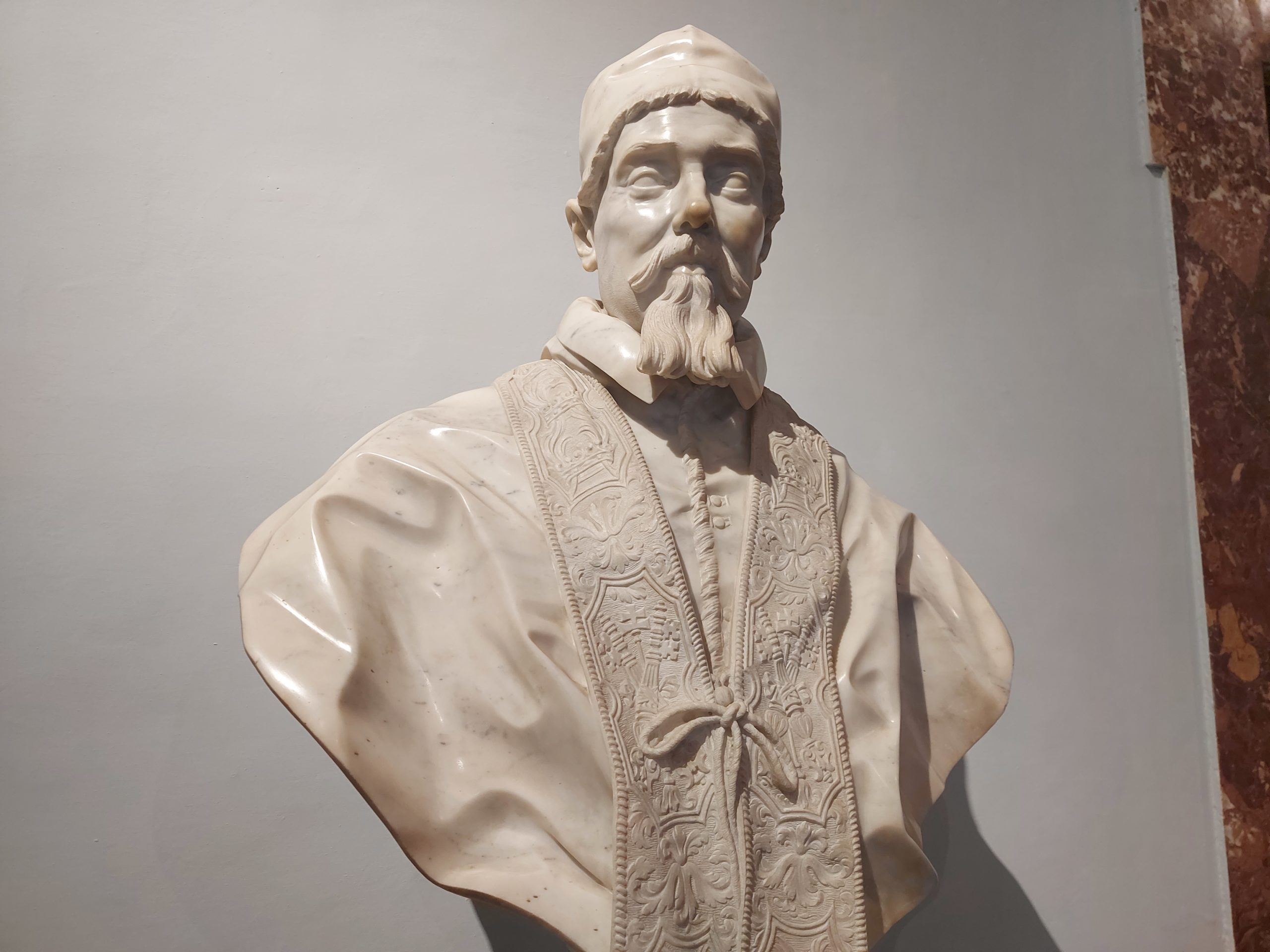Surrounded by masterpieces in Rome’s Barberini Gallery
As frequent visitors to Italy may know, the first Sunday of the month means free museum access for some museums.
We always take advantage of this for getting back to favorites. On a recent visit, my husband and I returned to the Barberini Gallery. We’ve both been many times over the years, but it had been some time since our last visit. A whole, new bottom portion of the museum is open – it had previously been an exclusive military club, but is now open to the public and part of the visit.
The spectacular 17th century Barberini palace is in central Rome, right off of Piazza Barberini.

The garden/vineyard that was the site of the current palace was purchased by the Sforza family in 1549. Maffeo Barberini, who would go on to become Pope Urban VIII purchased it from the Sforza family in 1625. Construction on the current palace began that year and was completed in 1633.
Borromini and Bernini worked jointly in creating this architectural masterpiece.
The collection is impressive. It includes Raphael’s La fornarina. This is the sensual portrait of one of Raphael’s (many) lovers, the daughter of a baker in Trastevere. Legend has it, when Raphael was painting then Chigi palace (now the Farnesina) in Trastevere, he was slipping away for so many trysts with his local lover, that the family temporarily moved her into the palace to … er … speed up work between “breaks”. As an aside, Raphael died at only 37 … believed from syphilis or another infectious disease.

In the same room, and just beside La fornarina, is another man known for pursuing (but in his case, also doing away with) a wide array of women – King Henry VIII, painted by Hans Holbein.
Aside from loving this portrait, and having seen it in almost every European history textbook growing up, I get a kick out of it today hanging in the former palace of a papal family. Odd twists of fate…

The rooms themselves are works of art, and I enjoyed this handy floor mirror to better appreciate the frescoes.

Bernini- in addition to designing the palace, also did papal busts. I’m always in awe of his ability to make marble look like folds fabric or hairs of a beard.

And Caravaggio’s masterpiece Judith Beaheading Holofernes , painted in either 1598-99 or 1602 and left behind in a Naples art studio he rented with two Flemish painters.
There is another painting attributed to Caravaggio, Narcissus, in this collection.

And Pietro da Cortona’s massive fresco, The Allegory of Divine Providence and Barberini Power (1633-39), takes up an entire room, but I was partial to this segment with the stylized papal seal complete with the crown, keys of St Peter/Vatican and the omnipresent Barberini bees.
A not-to-be-misssed museum in Rome – and even better if you happen through on the first Sunday of the month!


